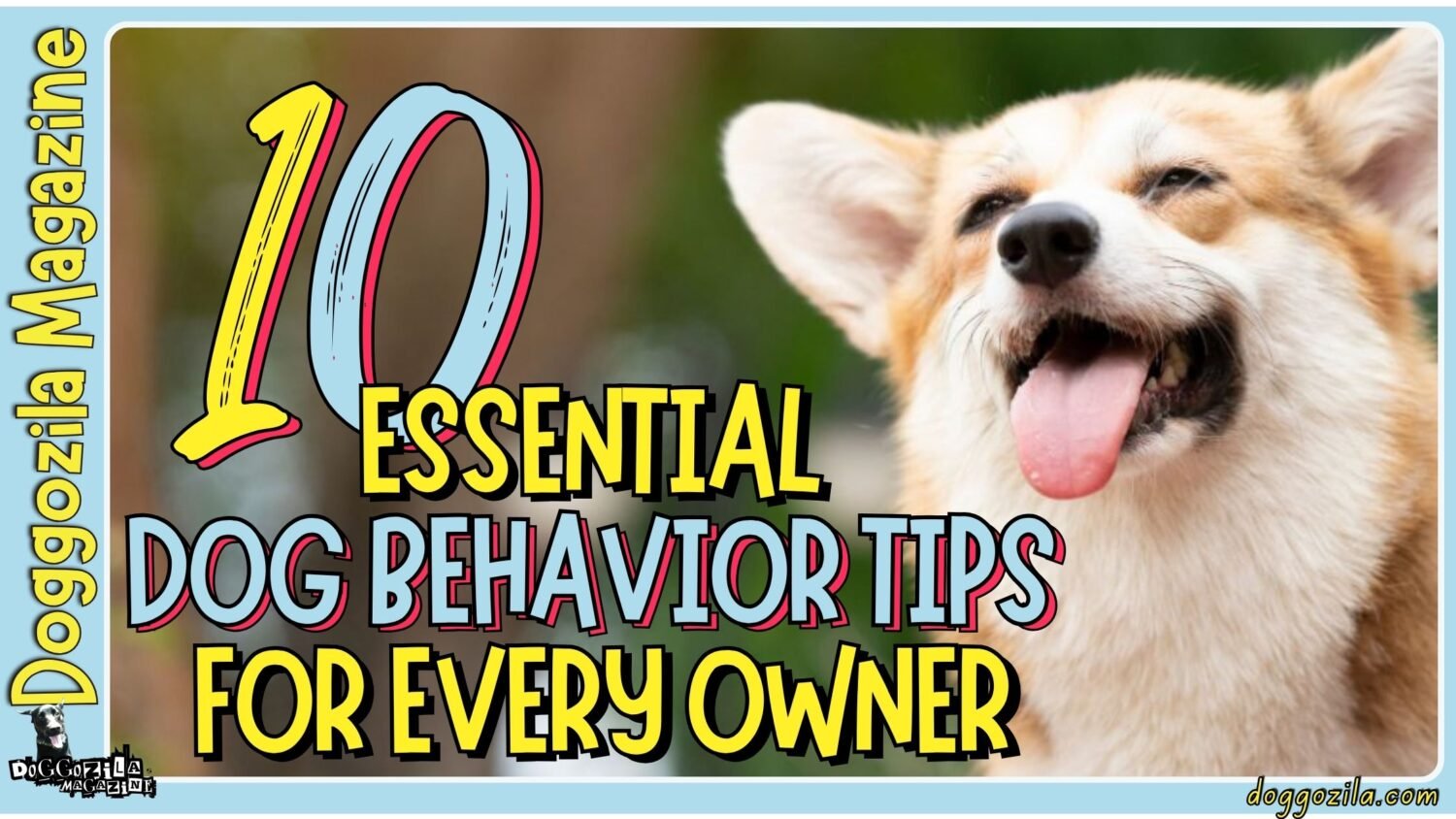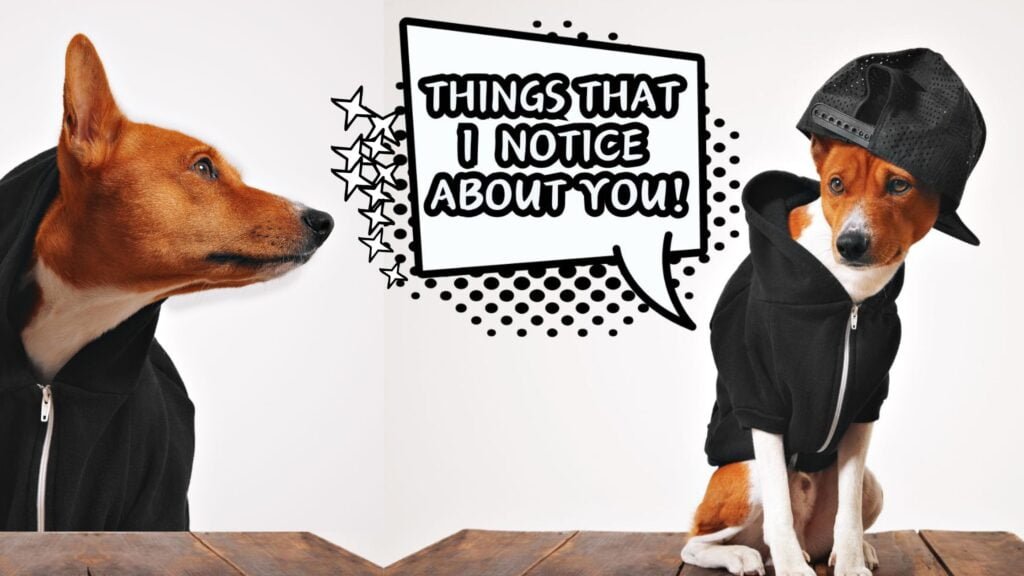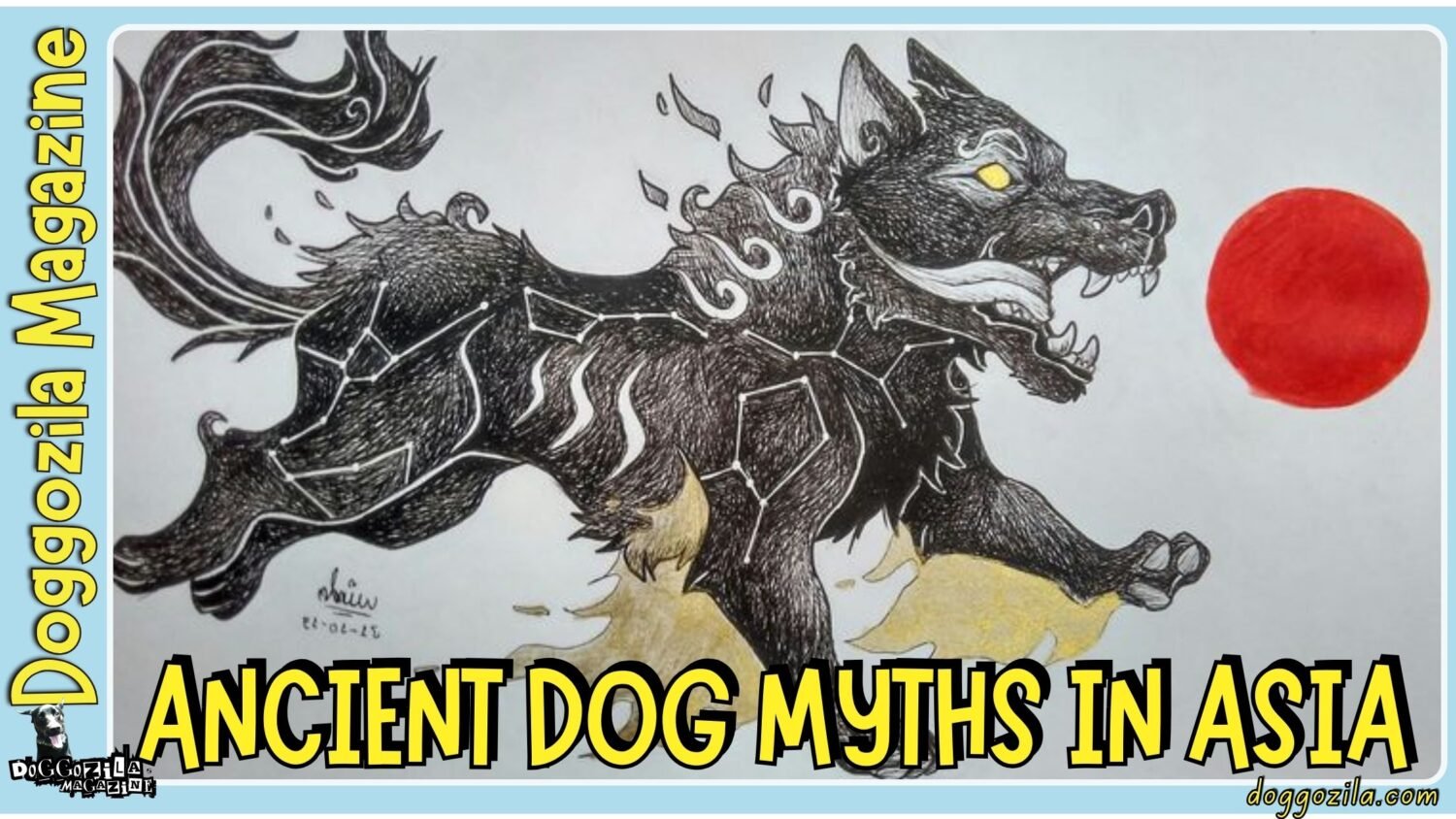Dogs are incredible companions, brimming with energy, intelligence, and a knack for learning cool tricks. Learning how to train your dog to high five isn’t just an entertaining party trick—it strengthens your bond, engages your pup’s mind, and adds a dash of flair to your training sessions!
Whether you’re a beginner or an experienced dog owner, this guide will take you on an adventurous journey to mastering the high-five. Plus, this trick is a great way to impress friends and family, adding a touch of personality to your dog’s interactions.
Learning new tricks enhances your dog’s confidence and fosters better obedience skills. Beyond the fun factor, trick training helps redirect excess energy into constructive activities, preventing boredom and destructive behaviors. Ready to turn your pup into a high-five champion? Let’s dive in!
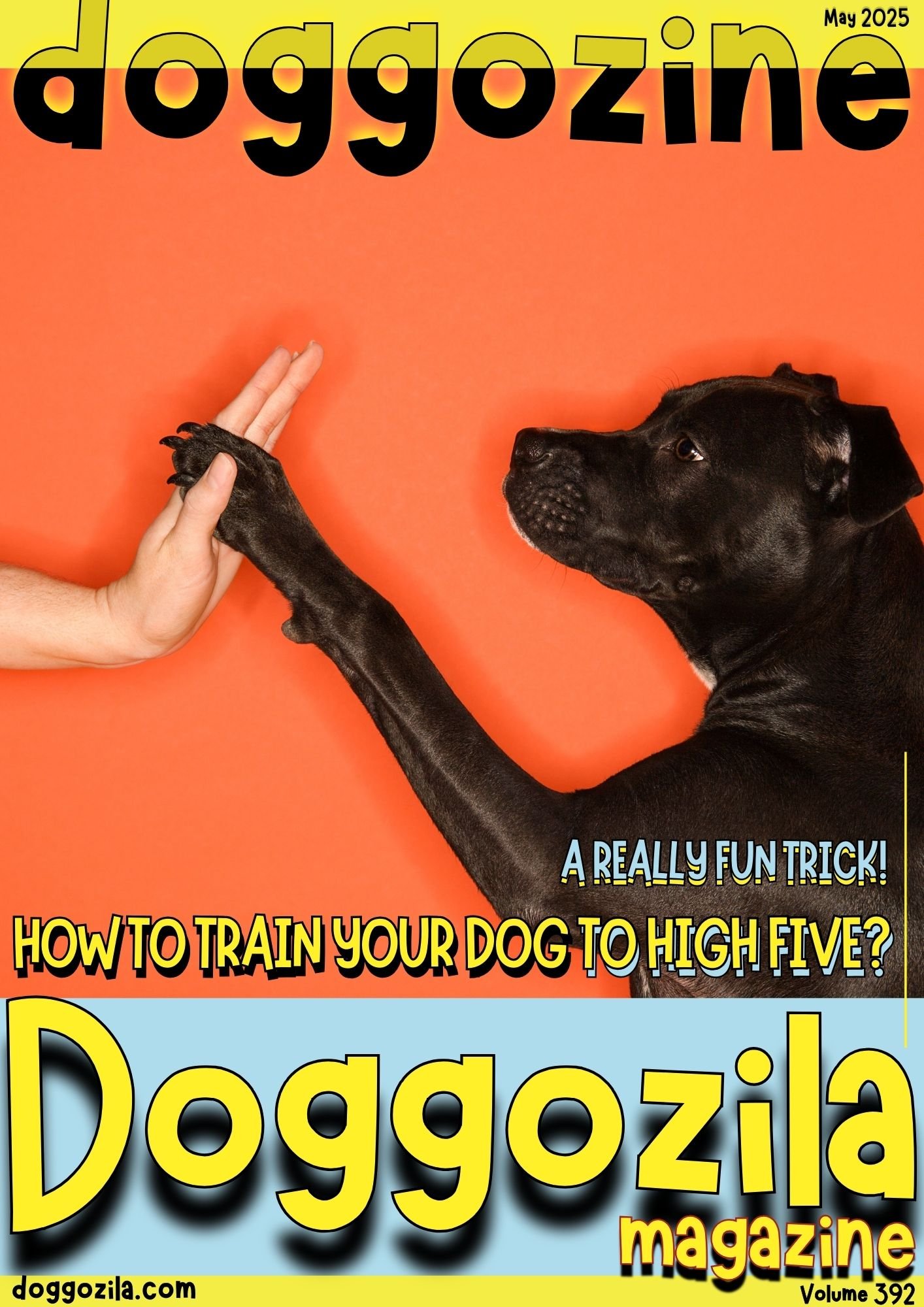
UNDERSTANDING YOUR DOG’S LEARNING STYLE IN TRICK TRAINING
Dogs learn in unique ways based on their breed, personality, and previous training experiences. Recognizing your pup’s approach to picking up new skills is the first step toward successful trick training. Some dogs thrive on verbal cues, while others respond better to physical gestures or environmental triggers. Analyzing your pup’s responses to different training methods helps ensure an efficient and enjoyable learning experience. The best approach is always to celebrate small victories and adjust techniques as needed.
Learning styles also vary based on a dog’s age—puppies are highly impressionable but may have shorter attention spans, whereas older dogs can display patience but might require extra reinforcement. For example, breeds like Border Collies and Australian Shepherds learn quickly through repetition, while more independent breeds may take extra encouragement. By understanding your dog’s strengths, you can tailor the training process to keep them motivated and excited.
How to Train Your Dog to High Five by Using Positive Reinforcement
Positive reinforcement is the secret ingredient to turning any training session into a fun-filled adventure. Instead of forcing behaviors, reward your dog when they do something right, reinforcing good habits while keeping the energy upbeat!
The power of reward-based training lies in creating associations between actions and rewards—this makes learning instinctual rather than stressful. Simple praise, enthusiastic encouragement, or food treats reinforce good behavior, making your dog eager to repeat it. Imagine teaching a toddler to clap their hands—when they receive praise and excitement, they instinctively want to try again.
The same principle applies to dogs, making positive reinforcement the best way to build strong trick-training habits. Reinforcing behaviors immediately helps ensure a clear connection between action and reward, helping dogs grasp new tricks faster. This method also fosters trust and strengthens your bond, turning training into an enjoyable experience rather than a chore.
The Science Behind Dog Learning – Why High Fives Work
Studies show that dogs process human interactions through associative learning. Teaching your pup to high-five leverages their ability to mimic gestures and associate rewards with actions, making it a natural and exciting trick for them to master.
This concept is backed by research from canine cognition studies, which highlight how dogs interpret human cues in ways similar to children. High-fives tap into a dog’s natural inclination to lift their paw when responding to attention or interaction. Just like a handshake signifies human greeting, a high-five for dogs can become their version of friendly acknowledgment.
Additionally, many dogs instinctively paw at objects to express curiosity—channeling this instinct into training helps them learn faster. Understanding the psychology behind dog learning can improve your approach and make trick training a smoother, more effective experience.
Recognizing Signs of Readiness Before Teaching Tricks
Some dogs pick up tricks quickly, while others need time to understand what’s being asked of them. Look for signs of eagerness, such as wagging tails, perked ears, and focused attention, before diving into new training routines.
If your pup responds well to commands like “sit” and “stay,” they’re likely ready to move on to more advanced tricks like the high-five. Certain personality traits indicate a natural enthusiasm for learning—dogs that eagerly respond to treats or toys often have a strong motivation to follow instructions.
Watch for behavioral cues like tail wags, playfulness, or attempts to mimic your movements. Dogs communicate through body language, so gauging their responses can help determine their comfort level. If your pup seems hesitant, starting with basic paw-lifting exercises can ease them into the trick while boosting their confidence.
🔑 Key Points: Every dog learns differently based on their breed, personality, and experience. Identifying their learning style helps you tailor the training process for better results.
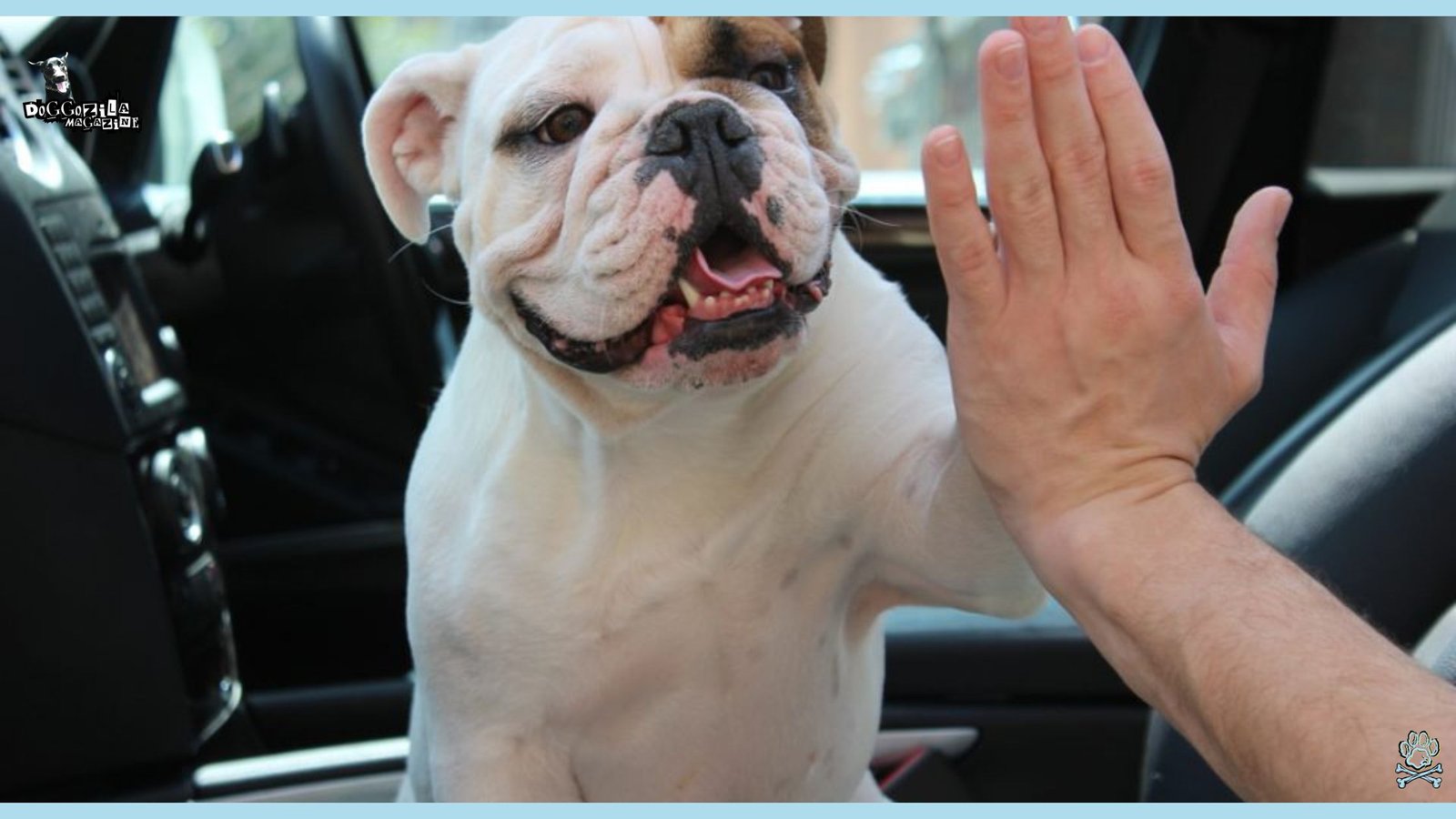
CHOOSING THE RIGHT TRAINING ENVIRONMENT
The success of how to train your dog to High Five depends largely on the space where you practice. A well-selected training area can make a significant difference. Dogs are highly sensitive to their surroundings, and a chaotic or overwhelming environment can slow down the learning process.
The best approach is to start training in a quiet, familiar setting where your pup feels safe and comfortable. If possible, choose a space with minimal foot traffic, away from loud noises or distracting smells. If your home is bustling with activity, try training in a dedicated corner or a fenced backyard where your dog can focus on the task at hand. The more consistent the training environment, the quicker your pup will pick up the high-five trick.
How Distractions Impact Your Dog’s Ability to Learn
From noisy televisions to passing cars, distractions can interrupt your dog’s focus. Starting in a calm and familiar environment ensures they absorb commands without external interference. Dogs, like humans, struggle to concentrate when too much is happening around them.
If your dog tends to get easily distracted, try limiting outside noise by closing windows or choosing an indoor space away from commotion. Training in a low-distraction environment helps build a strong foundation before gradually introducing distractions.
This technique is similar to how students perform better in quiet study spaces rather than noisy coffee shops. If your pup loses focus easily, consider scheduling training sessions during times of the day when your household is less active.
Setting the Stage – Creating a Training-Friendly Atmosphere
Use non-slippery flooring, remove unnecessary clutter, and ensure enough lighting. A comfortable setting keeps your dog relaxed and engaged throughout the lesson. Dogs thrive in structured spaces, so keeping the training area clear of unnecessary obstacles prevents confusion.
You wouldn’t try learning how to juggle in a room filled with breakable items—similarly, dogs need open, spacious areas to practice their movements. If your pup struggles with coordination, ensure they have enough room to maneuver without bumping into furniture.
Adding soft mats or traction-friendly surfaces can also prevent slipping, especially for older dogs or breeds with sensitive joints. Adjusting the environment to your dog’s needs makes each training session enjoyable rather than frustrating.
Choosing Between Indoor and Outdoor Training Spaces
Indoor training provides consistency, while outdoor sessions introduce fun variables like fresh air and natural motivation. Experimenting with both can enhance your dog’s adaptability to various environments. If your dog is easily distracted, indoor training eliminates unpredictable elements like birds, squirrels, or unfamiliar scents that may steal their attention.
On the other hand, outdoor training adds excitement and adventure, reinforcing the high-five trick in different settings. If you plan to showcase your dog’s skills at a park or social gathering, practicing in multiple environments helps prepare them for new scenarios. The key is finding a balance—start indoors for mastery, then transition outside for versatility and confidence building.
🔑 Key Points: A distraction-free space improves focus and speeds up learning. Whether indoors or outdoors, creating a comfortable and consistent training area makes a big difference.
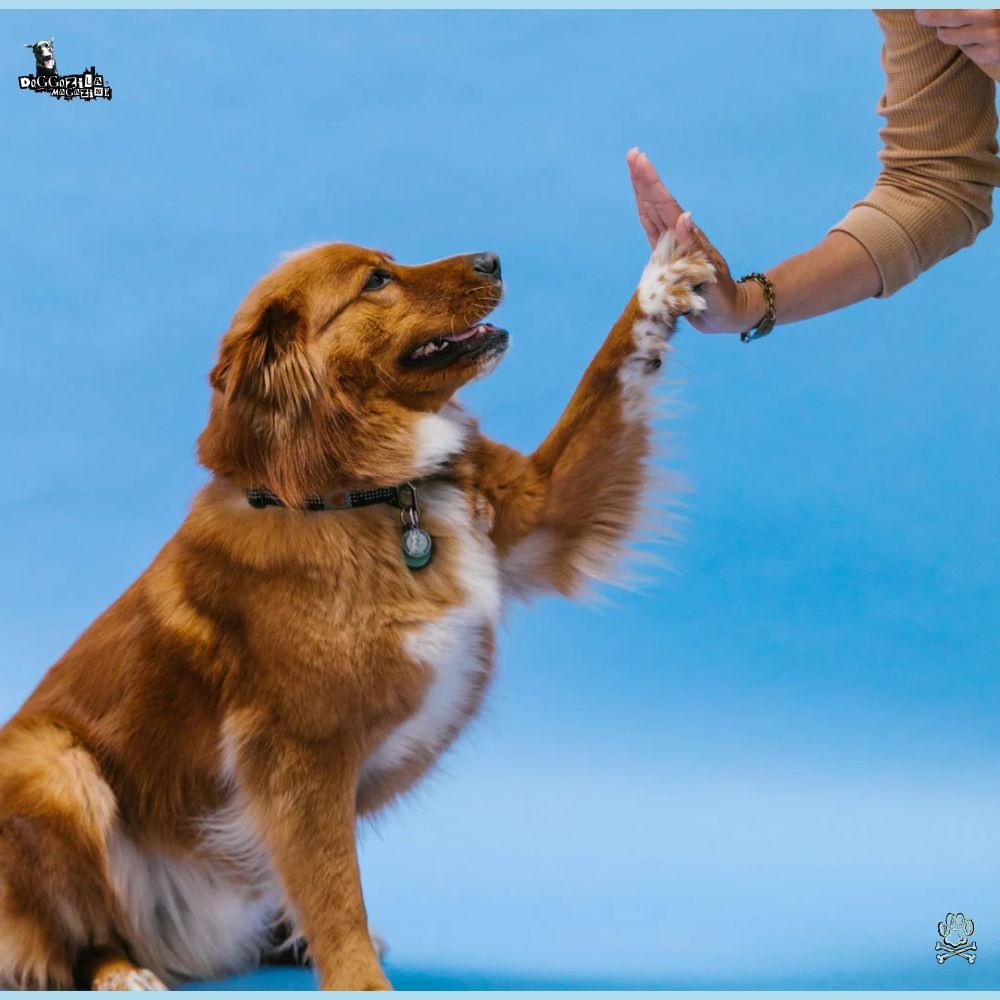
ESSENTIAL SUPPLIES YOU’LL NEED FOR TRICK TRAINING
Every trainer needs tools to ensure their pup is set up for success. Here’s what you’ll need to make and how to train your dog to High Five as a smooth and enjoyable process. Having the right supplies ensures effective training, minimizes frustration, and keeps your dog engaged.
Choosing the best tools depends on your pup’s learning style—some dogs respond enthusiastically to treats, while others prefer verbal praise or interactive toys. The key is to create a motivating environment where your dog looks forward to practicing their new skill. Gathering supplies in advance also streamlines training sessions, ensuring you don’t have to pause and search for missing items mid-training. A well-prepared trainer helps build confidence in their pup, making learning feel effortless and fun rather than overwhelming.
How to Train Your Dog to High Five With the Right Treats
Dogs are motivated by treats, but choosing the right ones is crucial. Low-fat, high-protein snacks work best for rewarding quick responses and encouraging repetition. Treat selection matters because overly rich or large treats can slow down the learning process by making dogs focus more on the food than the trick itself.
Opt for bite-sized rewards that your pup can eat quickly, allowing seamless transitions between repetitions. You can also experiment with different flavors—some dogs love chicken, while others go crazy for peanut butter or cheese!
Keeping a mix of soft and crunchy treats adds variety, preventing boredom during training. If your dog has dietary restrictions, try using their regular kibble or small portions of fruits and vegetables like carrots or apples as alternatives.
Clicker vs. Verbal Commands – Which Works Best for Your Dog?
Clicker training adds precision to reinforcement, while verbal commands foster verbal recognition skills. Choosing the best method depends on your dog’s personality and response pattern. Clickers are excellent for marking exact moments when your dog performs the desired behavior, reinforcing their learning with immediate clarity.
They create a distinct sound that doesn’t get lost in daily conversation, ensuring a clear training signal. Verbal commands, on the other hand, build strong communication skills, allowing your dog to recognize specific phrases associated with their actions.
If your pup is highly responsive to your voice, verbal praise might be more effective. Some trainers prefer combining both methods for maximum results—using the clicker for initial learning stages and transitioning to verbal commands for ongoing reinforcement.
Why Timing Is Everything When Using Rewards
The speed of reinforcement determines how fast your dog learns. Immediate rewards ensure correct associations between commands and actions, speeding up the learning process. Think of it like snapping a photo—the moment you press the button is the moment you capture the action.
Delayed reinforcement confuses dogs, making it harder for them to connect their behavior with the reward. Experts recommend giving treats within two seconds of the correct action to maximize learning efficiency. Precision in timing makes a huge difference, especially for energetic dogs that get easily distracted.
If you’re using verbal praise, ensure your tone is enthusiastic and consistent—dogs respond better to energetic encouragement than monotone feedback. By fine-tuning your timing, you’ll transform high-five training into a quick, fun, and rewarding experience.
🔑 Key Points: Having the right tools, including treats, clickers, and training-friendly flooring, ensures an enjoyable and effective training session for your pup.
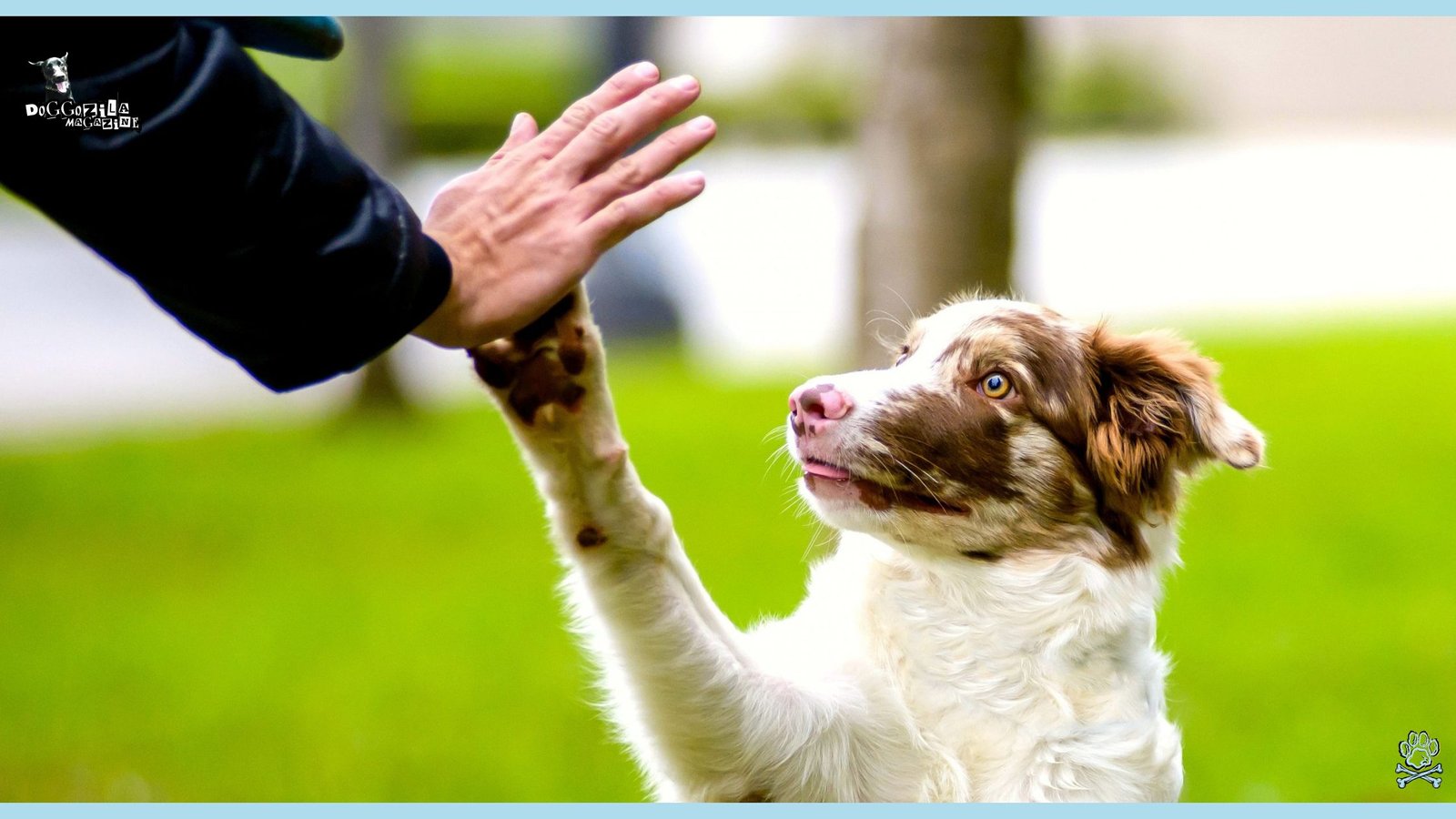
STEP-BY-STEP GUIDE ABOUT HOW TO TRAIN YOUR DOG TO HIGH FIVE
Now, let’s break down the actual training process into a few easy steps! Teaching your dog to high-five may seem simple, but it requires patience, consistency, and the right approach. Each step builds upon the previous one, ensuring your dog fully understands the trick before moving forward.
Dogs thrive on structured learning, and breaking down the process into manageable stages prevents confusion and frustration. As you train, remember that positive reinforcement and an encouraging attitude go a long way in keeping your pup motivated! Whether you have a playful puppy or a mature dog, these steps will help them master the high-five in no time.
How to Train Your Dog to High Five by Using Step-by-Step Progressions
Start with small victories. Teaching a high-five happens in stages, and each success builds toward the final trick. Reward incremental efforts to boost your pup’s enthusiasm! Begin by getting your dog comfortable with the idea of lifting their paw.
Some dogs naturally raise their paw during playtime or when seeking attention—take advantage of this behavior and encourage them to do it intentionally. Hold a treat slightly above their head or near their nose, so they instinctively lift their paw in response.
Timing is crucial—reward your dog immediately after they lift their paw so they recognize the action as a positive behavior. Repeating this step several times reinforces the movement, making it easier to transition into the full high-five gesture. If your pup doesn’t lift their paw right away, gently guide it with your hand to show them the desired action.
How to Master the Paw Lift – The First Step to Train Your Dog to High Five
Encouraging your dog to lift their paw is the foundation of a successful high-five trick. Hold a treat near their nose and slowly raise it upward until they instinctively lift their paw. This initial movement is the key to developing a high-five, as it teaches your pup to associate paw-lifting with rewards.
Some dogs may need extra encouragement, especially if they aren’t used to lifting their paw on command. If necessary, lightly tap their leg or use a verbal cue like “paw” to prompt the action. Once they lift their paw consistently, introduce a flat hand as the target for their paw to land on.
Keep your tone upbeat and cheerful to maintain their interest and make learning feel like a fun game. If your dog struggles to lift their paw, try incorporating toys or their favorite objects to spark excitement.
Linking the Paw Lift to the High Five Gesture
Once your dog reliably lifts their paw, introduce your open palm and reward them when their paw makes contact. Over time, they’ll associate the action with the phrase “High five!” Transitioning from a simple paw lift to a true high-five requires practice, but dogs learn best through repetition and reinforcement.
Position your hand so it’s easily reachable and encourage your pup to make contact naturally. You can help guide their paw toward your palm if needed, reinforcing the movement with praise and treats. Saying “high five” enthusiastically each time builds recognition, allowing your dog to connect the verbal cue with the action.
Gradually decrease the use of treats over time, relying more on verbal praise and excitement to keep your dog engaged. The goal is to turn the high-five into a fun and rewarding gesture that your pup eagerly performs without needing food incentives.
🔑 Key Points: Breaking down the trick into simple steps, starting with a paw lift and gradually transitioning to a full high-five, makes learning seamless and fun for your dog.

TROUBLESHOOTING COMMON TRAINING CHALLENGES
Not all dogs learn tricks at the same pace! Some grasp new skills within minutes, while others take days or even weeks to fully understand. The key to how to train your dog to High Five is patience, adaptability, and knowing how to overcome obstacles that may slow down progress. Every dog has a unique learning curve, influenced by factors like breed, age, temperament, and previous training experiences.
Recognizing potential challenges before they arise helps you adjust your approach and keep sessions frustration-free. If your pup struggles, don’t get discouraged—every training journey is an opportunity to strengthen your bond and improve communication.
How to Train Your Dog to High Five When They Seem Uninterested
Some pups aren’t immediately captivated by trick training. Using extra tasty treats, enthusiastic praise, and engaging voice tones can re-spark their interest. Dogs, like humans, perform best when motivated, and if they don’t seem excited about high-fives, the reward system might need tweaking.
Experiment with different treats—some dogs prefer crunchy biscuits, while others go wild for soft, meaty snacks. You can also increase engagement by making training more dynamic. Instead of static sessions, incorporate movement by encouraging your dog to chase a toy or follow you between commands.
Creating a high-energy, interactive environment makes learning feel like playtime rather than work. If your pup remains uninterested, try switching up training times—some dogs are more receptive in the morning, while others do better in the evening when their energy levels are lower.
Handling Fear or Hesitation When Trying the Trick
If your dog is hesitant, they may feel uncertain about their movements. Moving at their pace, staying patient, and keeping sessions short can help build confidence. Fear-based hesitation is common, especially in rescue dogs or pups who haven’t been exposed to trick training before.
If your dog backs away when you offer your palm for a high-five, start with smaller steps—praise them for lifting their paw even slightly, then gradually shape the behavior toward full contact. Avoid sudden movements that might startle them, and instead, let them initiate the action naturally.
Some dogs respond better to softer vocal tones and slower hand gestures, so adjusting your approach to match their comfort level is essential. Remember, confidence-building takes time, and every tiny success is a step toward mastering the trick.
Adjusting Your Training Method for Different Dog Breeds
Large breeds may respond differently than small breeds due to paw size and coordination. Customizing your approach ensures optimal results regardless of breed type! For example, smaller dogs might struggle with balance when lifting their paws, so keeping sessions brief prevents fatigue.
Bigger dogs, like Great Danes or Saint Bernards, may need extra space to move comfortably. Adjusting hand positioning also matters—if a dog has short legs, lowering your palm slightly makes the high-five more accessible. Recognizing breed-specific tendencies enhances training efficiency, ensuring all dogs, regardless of size or shape, can learn this fun and rewarding trick.
🔑 Key Points: Some dogs need extra patience, encouragement, and customized training methods to overcome hesitation, distractions, or lack of interest in trick training.

STRENGTHENING YOUR DOG’S HIGH-FIVE SKILL OVER TIME
Like any trick, consistency is key to maintaining success. Teaching how to train your dog to High Five isn’t just about achieving the trick once—it’s about reinforcing and perfecting it so your dog confidently performs it anytime. Building muscle memory in dogs happens through repetition and positive reinforcement.
The more frequently you practice the high-five, the more natural it will become for your pup. Keeping training sessions fun, rewarding, and short ensures your dog remains excited rather than frustrated. If you want to add flair to the trick, you can increase difficulty levels by making your dog hold their paw in the air longer or by having them high-five with both paws! The possibilities are endless when you turn training into an adventure.
How to Train Your Dog to High Five with Reinforcing the Behavior Daily
Repetition solidifies muscle memory, ensuring your dog doesn’t forget their high-five trick over time. Just like humans master skills through frequent practice, dogs need ongoing repetition to sharpen their abilities. Set aside a few minutes daily to reinforce the trick—short bursts of training keep your dog engaged without tiring them out.
Incorporate high-fives into everyday activities, such as greeting your dog when you arrive home or asking for a high-five before giving them a meal or treat. This ensures they naturally weave the trick into their routine, making it second nature. Over time, your pup will respond enthusiastically to the cue, performing high-fives effortlessly and eagerly.
How to Introduce High Five in Social Settings – Fun Ways to Train Your Dog
Encourage your pup to high-five friends and family as a fun way to display their newfound skill! Dogs love attention, and trick performances strengthen their confidence while entertaining those around them.
If you visit dog parks, introduce the high-five when meeting new canine friends—it’s a great icebreaker for social dogs! You can also teach them to high-five on cue for photo opportunities, creating memorable moments.
If your dog enjoys being in the spotlight, incorporating verbal cues and enthusiastic praise ensures they perform high-fives confidently in different settings. The more your dog sees positive reactions from others, the more excited they’ll be to show off their trick.
Moving Beyond the High Five – Other Fun Tricks to Try Next
Once your dog masters the high-five, explore new challenges like “shake hands” and “wave” for added fun. Trick progression keeps training fresh and exciting, preventing boredom. Teaching your pup multiple tricks enhances their cognitive skills and strengthens communication between you both.
After the high-five, you can introduce tricks like “spin,” “roll over,” or even “play dead” for an expanded repertoire of entertaining skills. Dogs thrive when they feel mentally stimulated, and continuous trick-learning keeps their minds sharp. Every trick learned is an accomplishment worth celebrating, reinforcing a strong and rewarding bond between you and your furry friend.
🔑 Key Points: Repetition and reinforcement solidify the trick, integrating high-fives into daily routines and social interactions while keeping training engaging.
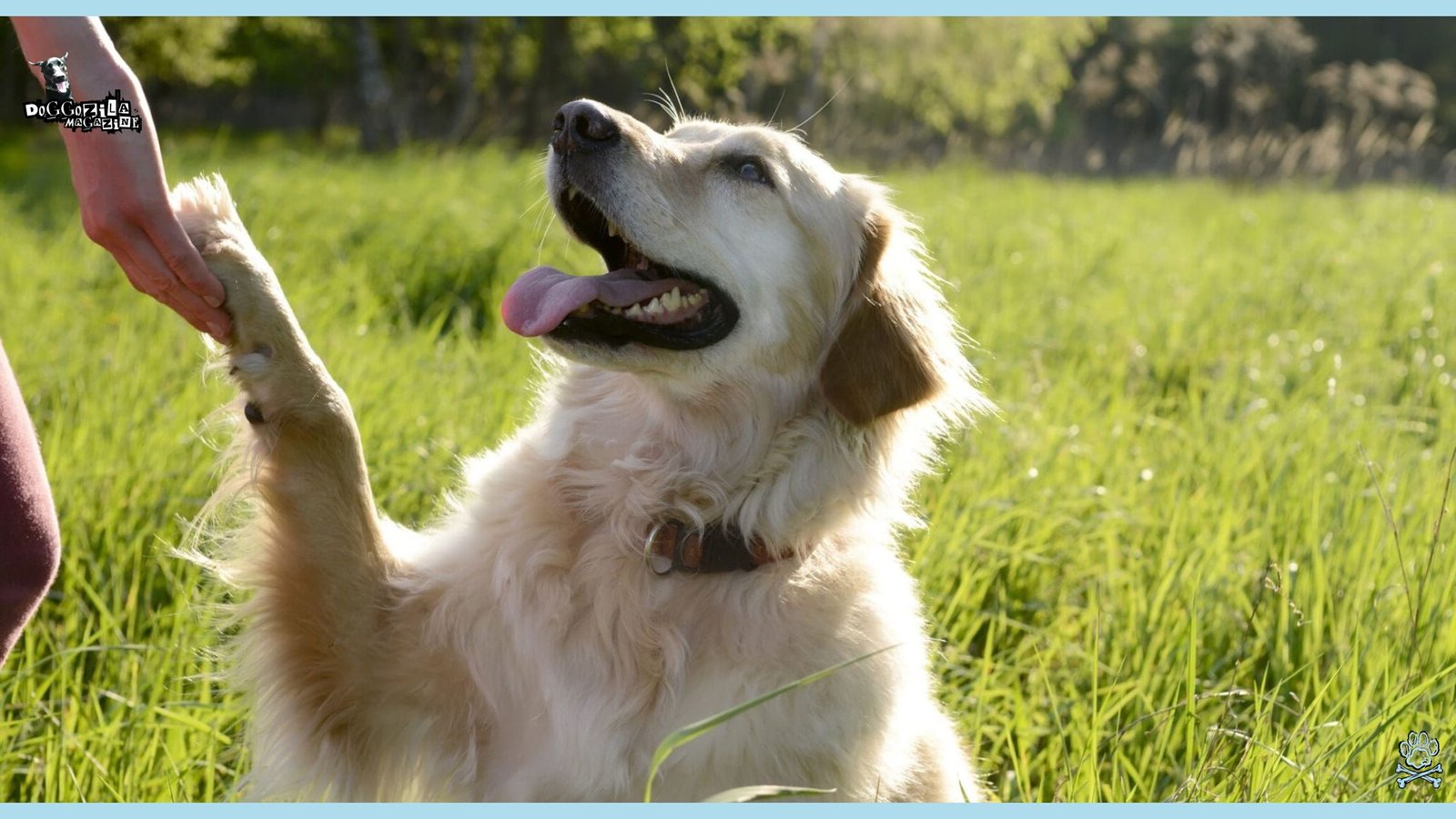
FUN WAYS TO CUSTOMIZE YOUR DOG’S HIGH FIVE STYLE
Every dog has their own flair—make their high-five unique! Trick training isn’t just about teaching a skill; it’s about allowing your pup to express personality and creativity. Some dogs naturally add their own twist, such as lifting both paws or holding the high-five position longer than expected.
Customizing the trick to match your dog’s temperament makes it even more enjoyable and engaging. Whether you want to make it flashy for social gatherings or simply reinforce it as a fun interaction, there are plenty of ways to tweak the high-five and make it extra special.
How to Train Your Dog to High Five With Personalized Gestures
Some dogs prefer to lift only one paw, while others love alternating! Experimenting adds personality to their trick. If your dog enjoys playing around with movement, try introducing different variations of the high-five. For instance, if they already know how to “shake hands,” teaching them to alternate paws can give the high-five a unique touch.
Dogs with high energy levels may enjoy jumping slightly when delivering their high-five, creating a playful and energetic display. On the other hand, calm and relaxed dogs might prefer a slow and graceful paw lift.
Observing your pup’s natural tendencies and adapting the trick accordingly ensures that it aligns with their personality. This makes trick training not just an obedience exercise but an enjoyable expression of their individuality.
Using Costumes or Props to Make High Fives Extra Exciting
A pair of cute doggy sunglasses or themed props can turn a simple high-five into an entertaining performance! If you love dressing your dog in fun accessories, incorporating costumes can make the trick even more engaging.
Imagine your pup giving high-fives while wearing a superhero cape or a tiny bowtie—it adds a playful element that makes them stand out. Props like soft foam paws or training gloves can also enhance the visual aspect of the trick, making it look exaggerated and hilarious.
The best part is that your dog will enjoy the attention and positive reactions they receive from friends and family. Creating a themed routine, such as a “paw-five” greeting for special occasions, makes training interactive and exciting for both you and your furry friend.
Turning Trick Training into a Bond-Building Experience
High fives aren’t just tricks; they’re a playful connection between you and your pup. Celebrate every victory! Training is more than just teaching commands—it’s about developing trust, deepening communication, and strengthening your relationship.
When your dog successfully performs a high-five, it’s a moment of shared accomplishment. Instead of rushing through the trick, take time to enjoy each success and express genuine excitement when they get it right.
Dogs thrive on positive reinforcement, and celebrating their learning process fosters a deeper emotional bond. Whether it’s a casual high-five at home or an enthusiastic interaction in a social setting, every paw lift represents a moment of connection between you and your pet.
🔑 Key Points: Personalizing the trick, adding props, costumes, or unique gestures makes high-fives more exciting and showcases your dog’s personality!

WRAPPING UP – WHY TEACHING HIGH FIVES STRENGTHENS YOUR BOND
Dogs thrive on interaction, and training them to high-five is more than just a trick—it’s a rewarding experience for both of you! Every paw lift represents a moment of trust, communication, and shared accomplishment, reinforcing the special connection you have with your furry friend.
When You Will Learn How to Train Your Dog to High Five?
By mastering how to train your dog to High Five, you’ve unlocked a fun and interactive way to engage with your pup, making everyday moments even more enjoyable. Trick training fosters patience, builds confidence, and strengthens obedience—all while keeping your dog mentally stimulated.
Whether you’re showing off their high-five at a social event, using it as a fun greeting at home, or capturing adorable photos for cherished memories, this trick adds a unique touch to your interactions. Dogs love learning when it feels like a game, and making training adventurous and engaging ensures their enthusiasm never fades.
The best part?
High fives are just the beginning—you can continue teaching them even more tricks, like waving, spinning, or bowing, expanding their skillset while keeping training fresh and exciting.
Final Thought on How to Train Your Dog to High Five
The journey of trick training is just as rewarding as the final result, filled with laughter, encouragement, and proud moments of success. So, go ahead and celebrate every little victory, whether it’s a clumsy first attempt or a perfect high-five performed with flair. Keep reinforcing, keep having fun, and most importantly—enjoy every playful moment with your pup!

🐾

